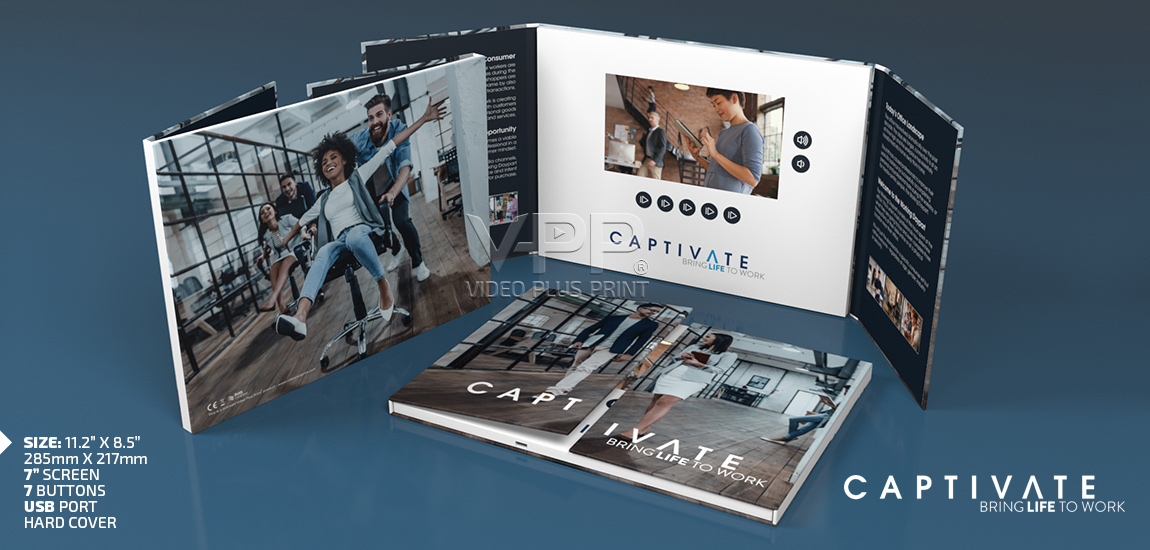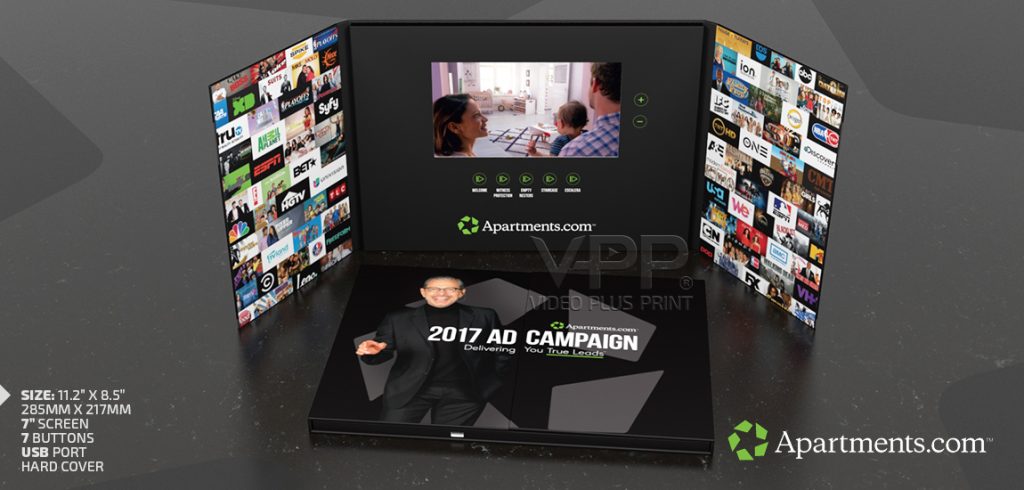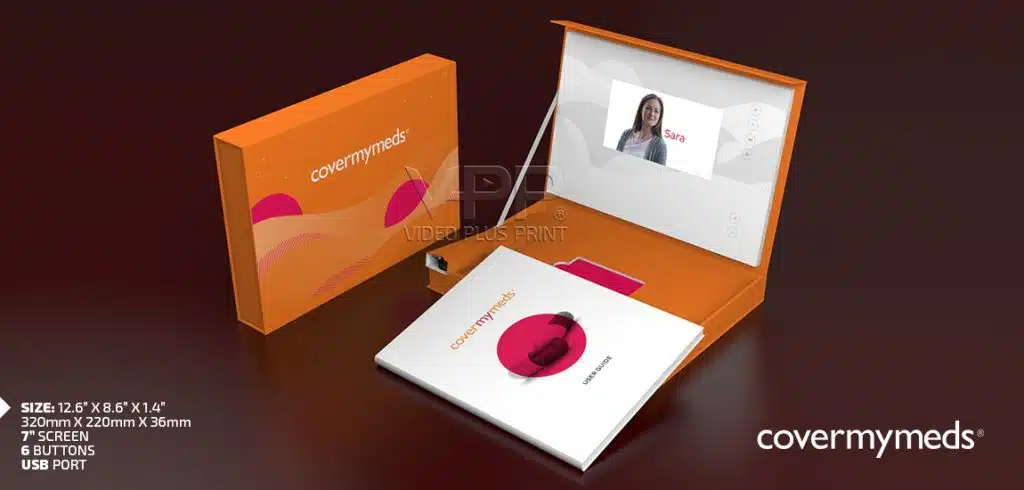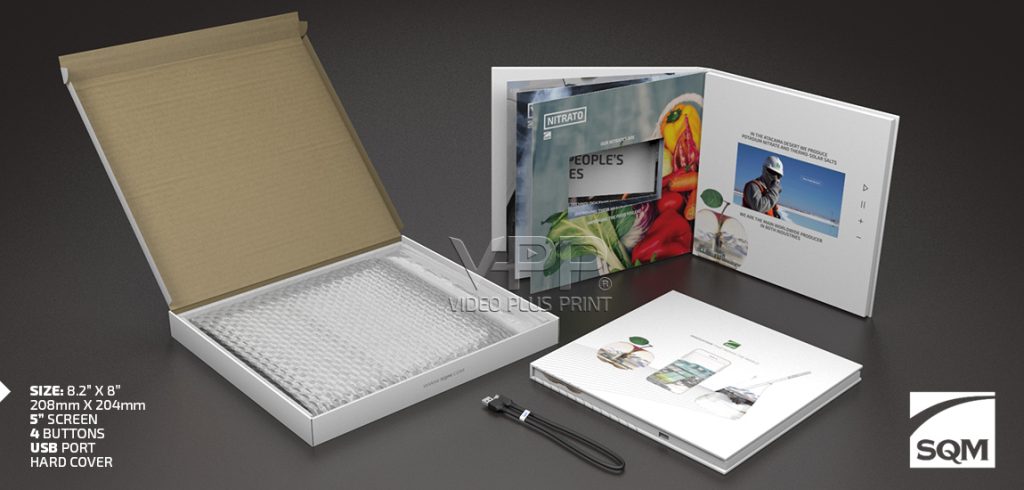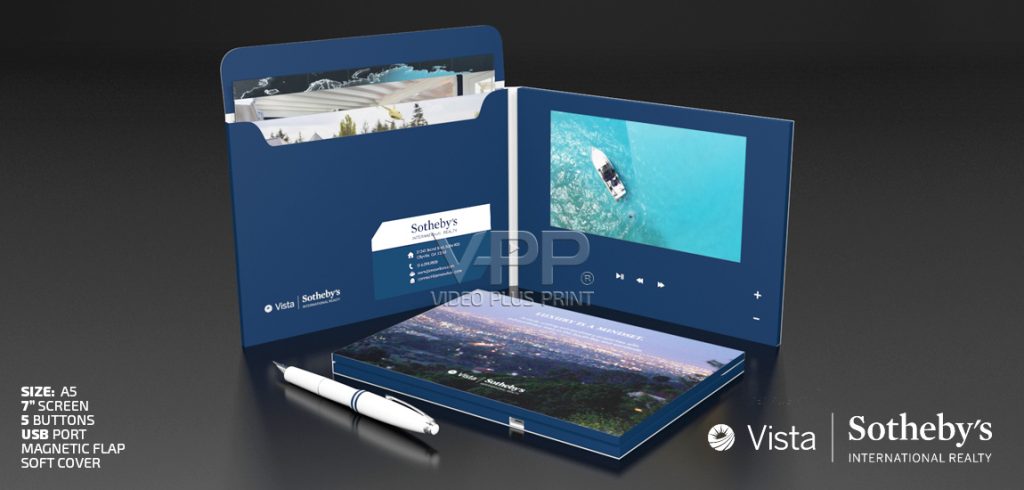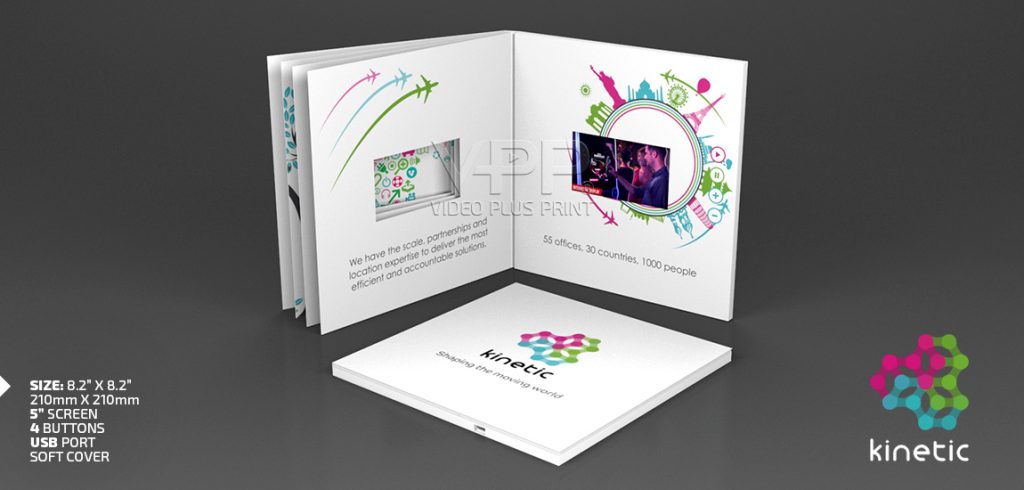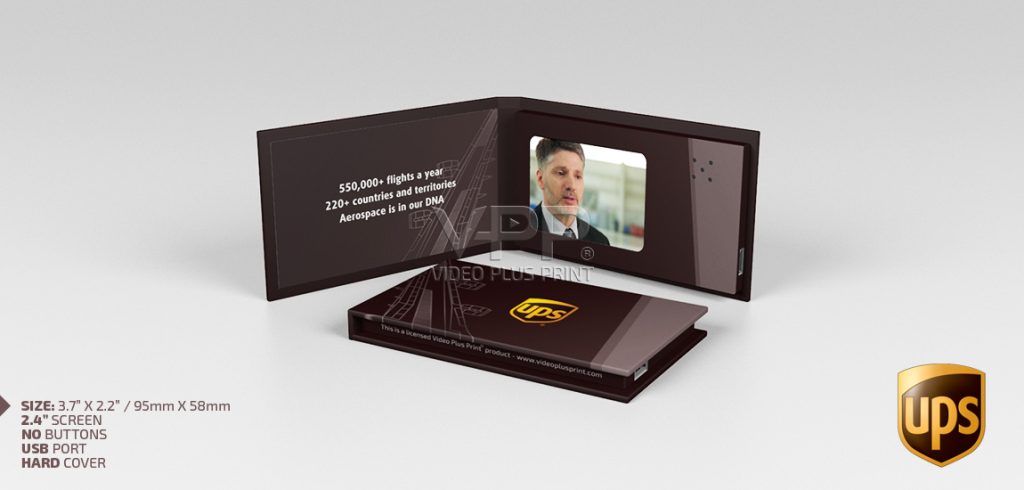What is a Video Brochure?
A video brochure is a unique marketing tool that combines traditional printed materials with modern digital video technology. It features a small, embedded LCD screen that plays video content, paired with printed information, all in one compact package. Video brochures engage and captivate the audience by merging the tactile experience of print with the dynamic nature of video storytelling. Businesses use video brochures for product launches, corporate presentations, direct mail campaigns, and more, creating a memorable impression on their audience.
What Size is a Video Brochure?
Video brochures come in various sizes to suit different needs and preferences. Common sizes include A4, A5, and custom dimensions. Within these brochures, screen sizes also vary, typically ranging from 2.4 inches to 10 inches. The most popular screen sizes are 4.3 inches and 7 inches, offering a good balance between visibility and portability. The overall size can be customized based on the campaign’s requirements or the target audience’s preferences.
What File Format is a Video Brochure?
Video brochures typically support several file formats to ensure compatibility and ease of use. The most common formats are MP4, AVI, and MOV. These formats are widely used due to their high-quality playback and compatibility with various devices. Ensuring your video content is in one of these formats will help it play smoothly on the brochure’s screen without any issues.
Are Digital Brochures Effective?
Yes, digital brochures are highly effective. They combine the strengths of traditional print marketing with the engaging, interactive nature of digital content. This combination results in higher engagement rates, better retention of information, and a more memorable experience for the audience. Businesses using video brochures often see improved responses to their marketing campaigns, higher conversion rates, and enhanced brand perception.
How Do You Make a Brochure Video?
Creating a brochure video involves several steps:
- Plan Your Content: Decide on the message you want to convey, including key points and a call to action.
- Scriptwriting: Write a clear, concise script that outlines your message.
- Storyboarding: Create a storyboard to visualize the scenes and flow of your video.
- Filming: Use a good quality camera and proper lighting to shoot your video.
- Editing: Edit the footage using video editing software to ensure smooth transitions, add effects, and include branding elements.
- Format: Save the final video in a compatible format, such as MP4, AVI, or MOV.
- Printing: Creating eye catching creative for your customers.
- The Benefits of Matte Lamination:When laminating video brochures, many choose matte lamination for its unique benefits. Unlike glossy lamination, matte lamination gives a more muted finish, making the material appear softer and more refined. This finish not only enhances the attractiveness and professional look of your printed materials but also offers protection against fingerprints, scratches, and other common types of damage.
- Enhancing with Spot UV Coating and Foil Stamping: Moreover, if you plan to apply Spot UV coating, matte lamination is a must. The contrast between the matte background and the glossy Spot UV highlights creates a stunning effect. Additionally, foil stamping stands out better against a matte finish, making your video brochure even more eye-catching and luxurious.
- Considerations for Graphic Design: However, keep in mind that a matte finish can visually reduce color saturation. As a result, designs with darker graphics may appear more muted and less vibrant. It’s important to consider this aspect when planning your video brochure design to ensure the final product aligns with your brand’s aesthetic and messaging.
By understanding these aspects of matte lamination, you can make an informed decision to enhance the look and durability of your video brochures, ensuring they leave a lasting impression on your audience.
Die cut Electronic Trays: With everything being customized to your needs, we custom make each tray to fit all brand new electronics into each tray.
- Electrical Magic: We sodder all brand new electronics within each tray and test with our on staff certified electrical engineers.
- Trays/Print Assembly: We wrap each unit with the custom design creative you have created around each tray with the electronics.
- Quality Control: We verify and check every single unit for quality printing, video playing smoothly and correctly with the proper base & treble. If anything is not right , we notify you with our findings on the video/audio issues within your files.
- Shipping: Package each product into a protective bubble bag, and packed in bulk into shipping boxes that are also thicker for protection for shipping internationally.
What is a Virtual Brochure?
A virtual brochure, also known as a digital or electronic brochure, is a digital version of a traditional printed brochure. It is designed to be viewed on electronic devices like computers, tablets, and smartphones. Virtual brochures can include multimedia elements like videos, animations, and interactive links, making them more engaging and informative compared to static print brochures. They are often distributed via email, websites, and social media platforms.
They can also be known as a video brochure, which in this case a video brochure can help reach your clients in a entire new way and gets noticed.
What Format is Best for Brochures?
The best format for brochures depends on the intended use and distribution method. For video brochures, MP4 is the most recommended format due to its high-quality playback, efficient compression, and wide compatibility with various devices. For printed brochures, PDF is ideal because it preserves the layout, graphics, and fonts across different devices and platforms, ensuring a consistent viewing experience.
What is the Most Popular Brochure Size?
he most popular brochure size is A4 (210 x 297 mm or 8.27 x 11.69 inches). This size is widely used because it provides ample space for content while remaining portable and easy to handle. A5 (148 x 210 mm or 5.83 x 8.27 inches) is also a popular choice for more compact brochures. Both sizes are versatile and can be used for a variety of marketing purposes.
What is the Standard Video Format Size?
The standard video format size for video brochures typically ranges from 2.4 inches to 10 inches. The most common screen sizes are 4.3 inches and 7 inches. These sizes offer a good balance between visibility and portability, ensuring that the video content is easily viewable while keeping the brochure compact and easy to distribute.
How Much is a Video Brochure?
Understanding the Cost of Video Brochures
When considering video brochures for your marketing strategy, it’s important to understand the cost involved. The price of a video brochure can vary significantly based on several factors, including screen size, memory capacity, and customization options.
Factors Influencing Price
The primary factor influencing the cost is the screen size. Common screen sizes range from 2.4 inches to 10 inches, with larger screens generally costing more. Additionally, the memory capacity, which determines how much video content you can store, can also affect the price.
Customization options, such as custom printing, additional features like buttons for play/pause, volume control, or the inclusion of a USB port, can further impact the cost. Moreover, ordering in bulk usually offers better price breaks, with significant discounts for larger quantities.
Typical Price Range
To give a general idea, video brochures typically range from $20 to $80 per unit. However, for highly customized designs or larger screens, prices can be higher. It’s best to contact a supplier for a detailed quote based on your specific needs and order volume.
By understanding these cost factors, you can budget effectively for your video brochure project, ensuring you achieve the desired impact within your financial constraints.
What is Video Card Marketing?
Introducing Video Card Marketing
Video card marketing is an innovative approach that combines traditional print marketing with digital video content. This method uses video brochures, also known as video cards, to deliver engaging and dynamic messages to potential customers.
How Video Card Marketing Works
Video cards are physical cards or brochures that contain a built-in LCD screen. These screens can play pre-loaded video content, allowing businesses to present their messages through video storytelling. The combination of tactile printed materials and multimedia content creates a memorable and immersive experience for the recipient.
Benefits of Video Card Marketing
One of the main benefits of video card marketing is its ability to capture and hold attention. Traditional print materials often fail to engage readers for extended periods, whereas video content is more likely to captivate and retain interest. This increased engagement can lead to better brand recall and a higher likelihood of conversion.
Additionally, video cards can effectively demonstrate products, share customer testimonials, and convey complex information in a simple, visual format. This makes them particularly useful for industries like real estate, technology, and luxury goods, where visual demonstration can significantly enhance the marketing message.
Implementing Video Card Marketing
To implement video card marketing successfully, businesses should focus on creating high-quality video content that resonates with their target audience. Clear storytelling, professional visuals, and strong calls to action are essential components of an effective video card campaign.
By integrating video card marketing into your overall strategy, you can enhance your brand’s reach and effectiveness, creating a more engaging and memorable experience for your audience.

